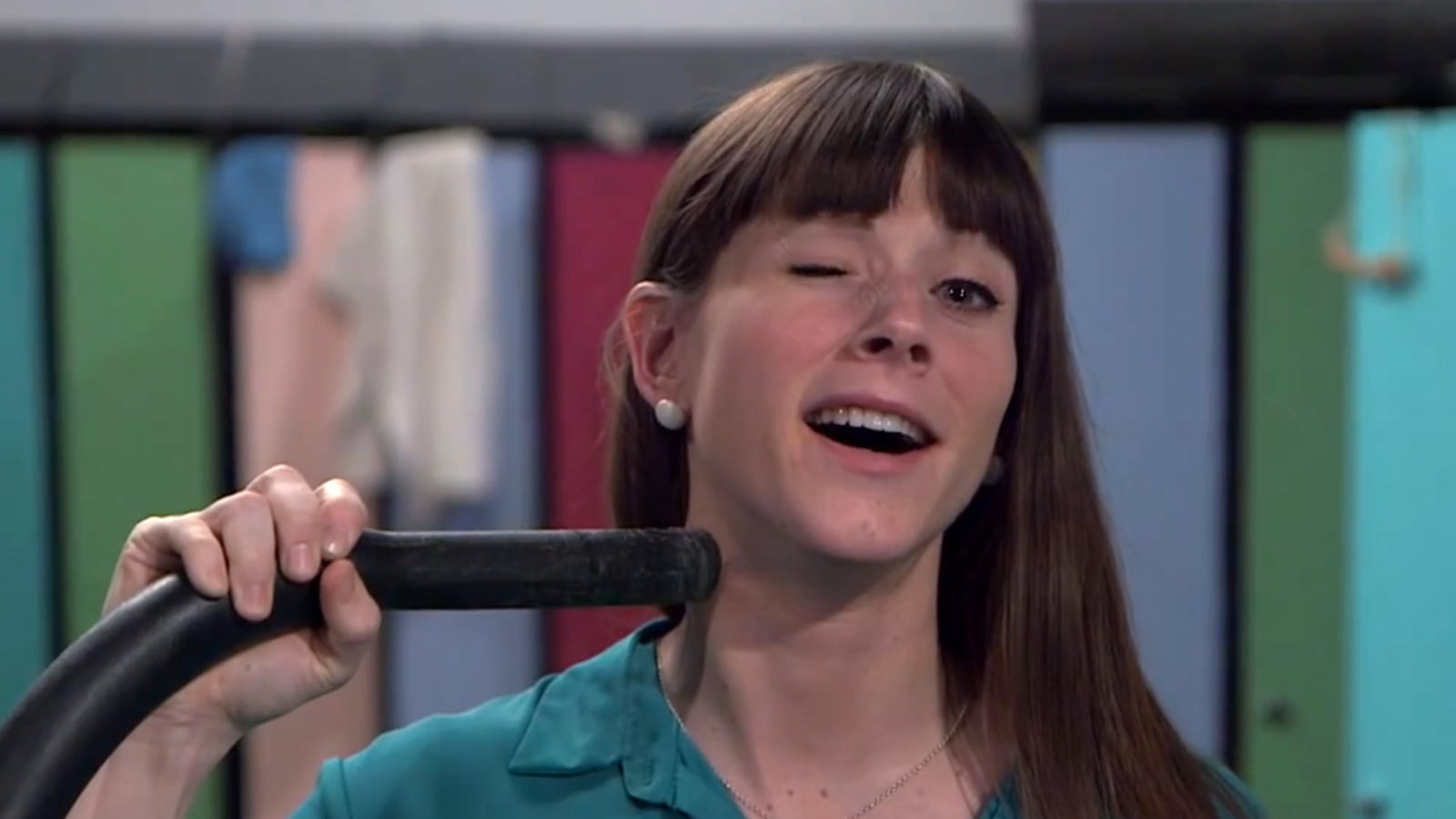Line Jansrud, a medical doctor and host of Newton—Norway’s science show for 8 to 12 years olds—is French kissing a tomato. “This tomato does not have a tongue, but it feels roughly the same,” she says, her sisterly smile dripping with pulp.
But the tomato is just foreplay. In episode eight of the program’s puberty series, titled “Sex and Stuff,” Jansrud—an energetic blend of scientist and sprite—gives herself a hickie with a vacuum cleaner, narrates over a simulated masturbation demonstration, and reveals the science behind orgasm. Other videos in the series cover topics like pimples, menstruation, and body hair and breast growth.
Before the main event, she informs her young audience about the country’s age of consent (it’s 16) and dishes out some nonjudgmental wisdom for curious preteens. “Remember, there’s no hurry to have sex. It comes when you are ready. And now I’ll show you how it works!”
Then she does just that. In a scene sure to make awkward prepubescent Norwegians practically die at their desks, Jansrud then pushes a lubricated hand-held dildo in and out of an anatomically correct model of a woman’s lower half while porno groove plays in the background. “Maybe slow at first, and faster later,” the authoritatively pregnant host says, and then shows with an accelerated thrusting.
The program is a new part of the sex education that third graders get in Norway, via NRK, the Norwegian public broadcast channel and NRK Super, the largest Norwegian website for children.
“We tell them about the universe, about plants, about electricity. Facts, facts, facts in an entertaining way,” Newton executive producer Kirsti Moe told The Daily Beast. Naturally, Moe said, on a program tasked with teaching children facts about the world, the topic of their own bodies would come up.
“We think they are ready for it,” Moe said. “These children are in puberty themselves or about to go there, and they are big enough to see that they’re changing. [The program] answers questions that they have already started to ask.”
Though a few parents have complained about just how graphic Newton’s simulations get, the overall reception to Jansrud’s joyous deconstruction of the most mysterious time in a young person’s life has been overwhelmingly positive, Moe said.
A similar program in the states (Bill Nye the Sex Ed Guy?) wouldn’t stand a chance.
A long as sex education has been taught in public schools, a contingent of fearful parents have opposed it with the argument that the lessons promote sexual activity or undermine parental authority.
In the eighties, we had “What’s Happening To Me?” a cutesy look at puberty through vignettes narrated by a kindly teacher-type and voiceless animated characters. Though it was controversial at the time, it literally dances around the topic of sex: in one scene, a top hatted sperm tangoes with an egg in heels to make a baby.
Since then offended parents and their mortified children have picketed outside public schools, written letters of protest demanding health textbooks be pulled, circulated fliers equating materials on puberty to pornography, and tried to oust teachers who give lessons on sexual reproduction.
All that effort seems to have paid off.
Twenty-two states currently mandate sex education, according to the Guttmacher Institute (PDF) and only 13 require that it be medically accurate. When a school does teach its students about sex, 37 states require that the curriculum include lessons on abstinence and 25 require the “just say no” approach be stressed.
And the students are learning as little as ever. Nearly one-quarter of millennials have had no sex education at all, according to a 2015 survey by the Public Religion Research Institute (PDF). And 37 percent of the students that did, called it “unhelpful.” (In related news, a judge in California ruled yesterday that abstinence-only curriculums violate state law and that medically accurate sex ed is “an important public right.”)
The effect of such a knowledge gap is clear. Kids in the United States know less about their bodies, how they work, and how to protect them.
A 2012 study asked 6-year-olds in England, the Netherlands, Sweden, and the United States to draw a picture that answered the question, “Where do babies come from?” Children from Sweden and the Netherlands, known for progressive sex education programs, showed the highest comprehension. Children from the U.S. predictably lagged behind.
And European countries that start teaching their children about sex at younger ages enjoy more positive health outcomes. Though teens in the U.S. and Europe have about the same amount of sex, according to the Guttmacher Institute, European teens are more likely to practice safe sex and less likely to get pregnant. Teens in the U.S. are four times as likely as those in Norway to have babies, while Norway’s teen) and overall abortion rates are lower.
With so much to gain, U.S. preteens, their parents, and schools alike could learn a thing or two from Jansrud’s unabashed take on the science of sex, which can be watched here in full (and with subtitles). Even evangelicals—the most vocal in the anti-education movement—could get behind Jansrud’s ultimate message: that sex is for procreation.
“And what’s the point?” she asks at the end of the video, raising her shirt to expose her plump baby bump. “To make babies!” (Moe also promises a future birth episode, which if the sex series is any indication, should be graphic enough to inspire fear in the hearts of any sexually active teen.)
So far, the most dangerous consequence for Norwegian preteens has been a few red faces.
“Classes usually watch our program during meal times, because it’s good for learning, good for entertaining, and keeping them calm, but lots of kids want to watch this by themselves,” executive producer Moe said.
“We have very good ratings on the Internet.”






